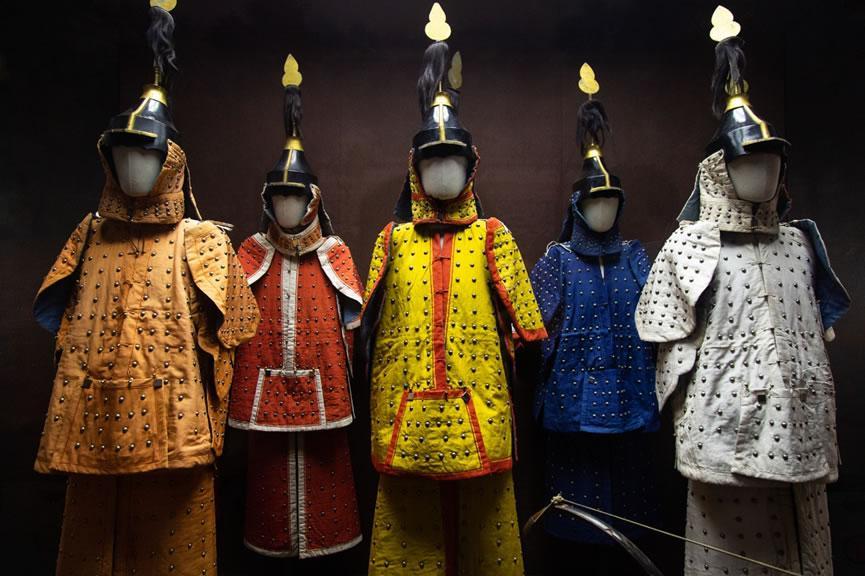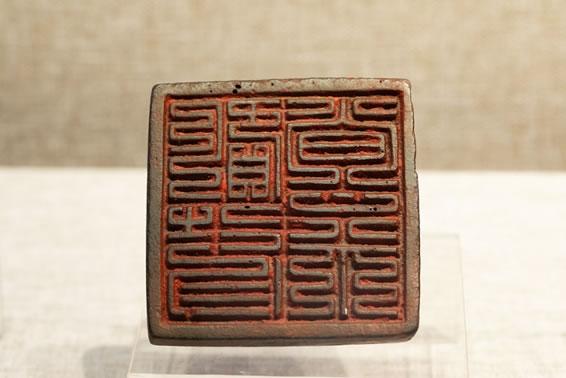What's wrong with the theory of "Dynasties of Conquest"?

The theory of "Dynasties of Conquest" was put forward by American historian Karl August Wittfogel and others in 1949 in the book History of Chinese Society: Liao, 907-1125.
Subsequently, the academic circles in Japan and the West gradually evolved this so-called theory into more erroneous interpretations of Chinese history, such as the "North Asian History" and the "New Qing History." So, what is the main flaw in Wittfogel's theory of "Dynasties of Conquest"?
Partially exaggerating the regional differences in China
According to the theory of Dynasties of Conquest, two different types of nomadic tribes evolved after their conquest of the Central Plains and the establishment of their regimes.
One type is those who actively adopted the Central Plains culture, giving up the tribal organization and lifestyle of nomadic tribes. They are known as Dynasties of Infiltration, represented by the Sixteen Kingdoms (304-439) and the Northern Wei Dynasty (386-534, the first one of the Northern Dynasties).
The other type is those who consciously and deliberately resisted the influence of the Central Plains culture after conquering the Central Plains and establishing their regimes. With a binary structure, they maintained the tribal organization and lifestyle of nomadic tribes, taking a dual-track approach in economy, religion, language, customs, rituals, political organization, and military organization to avoid assimilation into Central Plains culture. They are known as Dynasties of Conquest, represented by the Liao (907-1125, established by the Khitan), the Jin (1115-1234, established by the Jurchen), the Yuan (1206-1368, established by the Mongols), and the Qing (1616-1911, established by Jurchen).
Tracing the history of scholarship, we can find that Wittfogel's theory of Dynasties of Conquest was influenced by the false ideas propagated by the Japanese imperialists in the first half of the 20th century, such as "Manchuria and Mongolia are not part of China Proper," "North-South Ethnic Opposition," and "The land beyond the Great Wall does not belong to China Proper."
At that time, not only did many Japanese scholars write books promoting these ideas, but the Japanese military also mobilized academic institutions such as Academy of Oriental Culture of Tokyo and the Oriental Culture Institute of Kyototo to publish a book on the ruling history of Liao, Jin, Yuan, and Qing dynasties in China, which aimed to defend and provide strategies for Japan's invasion of China.
Correspondingly, soon after the theory of Dynasties of Conquest was put forward, it gained immediate responses from the Japanese academia. For example, scholars like Tamura Jitsuzō, Murakami Masatsugu, Shimada Masao, and Sugiyama Masaaki claimed that the Dynasties of Conquest should be incorporated into the North Asian history, which they perceived as independent from the history of China. Egami Namio even used the term "equestrian nomads" to collectively refer to non-agricultural nomadic and hunting tribes, exaggerating the opposition between nomadic and agrarian tribes.
Since the 1990s, some American scholars with close ties to the Japanese academic community have started to use this theory to exaggerate the regional differences in China and to deconstruct the unity of China.
Among them, American researchers like Evelyn Rawski and Mark C. Elliott, known for their New Qing History, claimed to "transcend the China-centered perspective" under the guise of using Manchu documents. They highlighted the so-called uniqueness and heterogeneity of the Qing Dynasty, portraying it as an expansionist Manchu Empire or a colonial empire. They further deconstructed the unity between the Qing Dynasty and China, asserting that "China is not equivalent to the Qing Dynasty" and that "China is merely a part of the Qing Dynasty."
Neglecting the close connections between different regions in China
The theory of Dynasties of Conquest tends to create a contrast between the Central Plains inhabitants and the ethnic minorities in the north, as well as between the Central Plains dynasties and the northern borderlands, overlooking their close connections. In fact, as early as 5,000 years ago, during the early stages of Chinese civilization, there were close interactions between cultures such as the Yangshao Culture in the Yellow River Basin, the Liangzhu Culture in the Yangtze River Basin, and the Hongshan Culture in the Liao River Basin, etc. Among them, the Jade Dragon Culture in the Hongshan Culture, in particular, has a profound influence on Chinese civilization even until now.
In terms of economy, the northern borderlands also had close connections with the Central Plains. The history of human development has shown that animal husbandry emerged from agriculture.
Archaeological excavations have revealed that many sites in the northern borderlands initially practiced agriculture and later transformed to animal husbandry due to factors such as climate change. Across the entire northern borderlands of China, from the eastern foot of the Greater Khingan Mountains, through the middle and upper reaches of the Liao River, spanning the Yin Mountains and the Qilian Mountains, all the way to the eastern edge of the Qinghai-Xizang Plateau, there are many agricultural-pastoral transitional zones in Northeast China, Inner Mongolia, Hebei, Shanxi, Shaanxi, Ningxia, Gansu, Qinghai, and other regions.
In terms of politics, the Central Plains dynasties incorporated the northern borderlands into their administrative jurisdiction very early on. In the time of King Wu of the Zhou Dynasty (around 1046 BC), when he overthrew the Shang Dynasty (c.1600-1046 BC), the Sushen people – an ancient ethnic group in Northeast China, mainly engaged in hunting and animal husbandry, and the ancestors of the modern Manchu people – paid tribute with a type of arrow, with an arrowhead made of the hard green stone from the Songhua River. The historical book Zuo's Commentary contains a statement by an envoy of King Jing of Zhou, "The Sushen, Yan, and Bo are part of our northern territory."
In the Qin (221-206 BC) and Han (206 BC – AD 220) dynasties, the Liaodong Peninsula was incorporated into the system of prefectures and counties. After the Qin and Han dynasties, though the relationship between the northern borderlands and the Central Plains dynasties varied throughout different periods, their connections had always remained close.
How to understand the so-called Binary Structure
China has a long history and tradition as a unified multi-ethnic country. As early as in the pre-Qin period, the saying "under the vast sky, all land belongs to the king; along the border, all people are subjects of the king" had already become deeply rooted in Chinese people's hearts.
The Qin Dynasty, which achieved unprecedented unity of China, was the first to achieve uniformity of scripts, of axle tracks of carriages, of measurement units, and of codes of conducts. Since then, this idea of "Great Unity" has become the mainstream and tradition of Chinese civilization. Although the specific situations varied for local kingdoms, they all made efforts to learn from the culture and systems of the Central Plains, aiming to inherit the "mandate of heaven" and carry forward the orthodox Chinese heritage.

Admittedly, the Han Chinese population far outnumbers the ethnic groups, so rulers of the Liao, Jin, Yuan, and Qing dynasties indeed adopted measures to maintain their own characteristics. In particular, the Liao and early Jin dynasties implemented multiple administrative systems at the same time. However, this does not mean that they practiced a binary structure as asserted by some foreign historians.
The political centers of the Liao and early Jin dynasties, to some extent, remained in the border areas where the two states had been founded and had gradually risen to power. The agricultural regions under their control did not yet have an overwhelming dominance over the border areas. Therefore, the ruling groups had to rule by the local customs and adopted two parallel administrative systems in which government officials could move in-between.
The political centers of the Yuan and Qing dynasties were in the agricultural regions, and the operation of the dynasties primarily relied on the human resources and material resources in these regions. As a result, a unified system that accommodated the special characteristics of the border areas was adopted.
More importantly, the Liao, Jin, Yuan, and Qing dynasties actively learned from the culture and systems of the Central Plains. The Liao Dynasty recruited and favored Han intellectuals, and utilized their talents. The capital city of the Liao Dynasty, Shangjing, was designed and constructed by Han Chinese people. The official system of the Liao Dynasty was largely based on the Central Plains' system. In terms of the writing system, the Liao Dynasty created the Khitan large script based on Chinese characters, and meanwhile, Chinese characters were also widely in use. Archaeological artifacts also reveal the profound influence of Central Plains culture on the daily life of Khitan nobles.
After the Jin Dynasty established its regime over the Central Plains, it gradually embraced Central Plains culture. The Jin Dynasty relocated its capital from the Heilongjiang region to Beijing and built Zhongdu (the central capital) according to the Central Plains' style, which had a significant influence on the choice of Beijing as the capital of later dynasties.
The Jin Dynasty also promoted Confucianism, establishing translation institutions to translate Confucian classics such as The Analects and Mencius into the Jurchen script. To meet the demand for the imperial examination based on Confucian classics, the Jin Dynasty also mobilized staff to compile and edit books of classics and history.
Kublai Khan, the ruler of the Yuan Dynasty, entrusted Central Plains scholars with designing two capital cities, Dadu and Shangdu, and attached great importance to the benevolent virtues of the Central Plains. In 1260, in his enthronement edict, he stated that when the Mongolian people rose to power, they were too occupied with warfare, resulting in a lack of governance by civilians. He vowed to promote the concept of benevolence, generosity and aid to the people.
In 1271, Kublai Khan also took the advice of Han advisers and changed the previous practice of determining the country's name in accordance with feudal states, titles, and official positions. This change fully demonstrated the Yuan Dynasty's inheritance and development of orthodox Chinese traditions and culture.
The Qing Dynasty greatly emphasized on honoring Confucius and studying the classics, and large-scale efforts were made to collate documents and compile books. Qing emperors visited Qufu, Shandong (Confucius' hometown) to pay respects to Confucius, with the number of visits being the highest among all dynasties, accounting for nearly half of the total visits made by emperors throughout history.
The famous 万世师表 (Wanshi Shibiao in Chinese pinyin, meaning the model teacher of all ages) tablet in the Confucian Temple in Qufu was inscribed by Emperor Kangxi of the Qing Dynasty in person. It is worth noting that Emperor Yongzheng of the Qing Dynasty wrote the book Da Yi Jue Mi Lu (On the Legitimacy of the Qing Dynasty), emphasizing that the Qing Dynasty achieved unprecedented universal unity and justifying its legitimacy with reasons such as "only those with virtue can be the ruler of all under heaven."
In other words, even though the ruling groups of the northern ethnic groups attempted to maintain their own ethnic characteristics, they never denied the fact of their self-identification as orthodox Chinese dynasties, and their learning and inheritance of Central Plains culture.
In summary, the emergence of the theory of Dynasties of Conquest has its academic roots intertwined with various fallacious theories during Japan's invasion of China, rather than an innocent product of academic research.
Whether its proponents had been inadvertently misguided or were deliberately distorting Chinese history, it does not conform to the objective historical facts and has become a tool of those with ulterior motives to undermine the solidarity of the Chinese nation and the unity of China.
The authors are Li Shizhen, professor and vice dean at School of Marxism, Inner Mongolia Agricultural University, and Wang Qichang, vice professor at School of Marxism, Inner Mongolia University of Finance and Economics.
Liu Xian /Editor Yang Yan /Translator
Yang Xinhua /Chief Editor Ren Qiang /Coordinator
Liu Li /Reviewer
Zhang Weiwei /Copyeditor Tan Yujie /Image Editor
The views don't necessarily reflect those of DeepChina.
